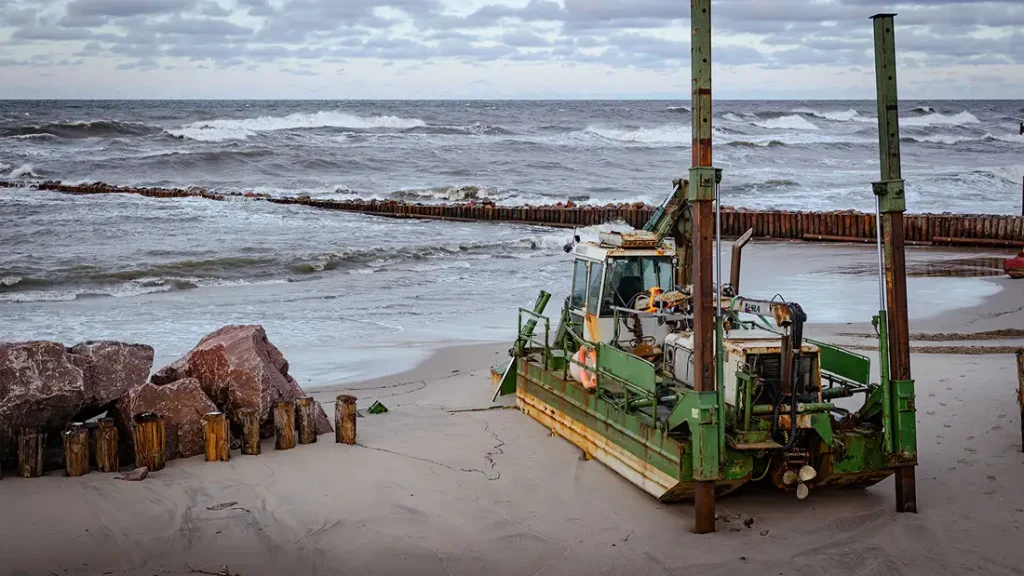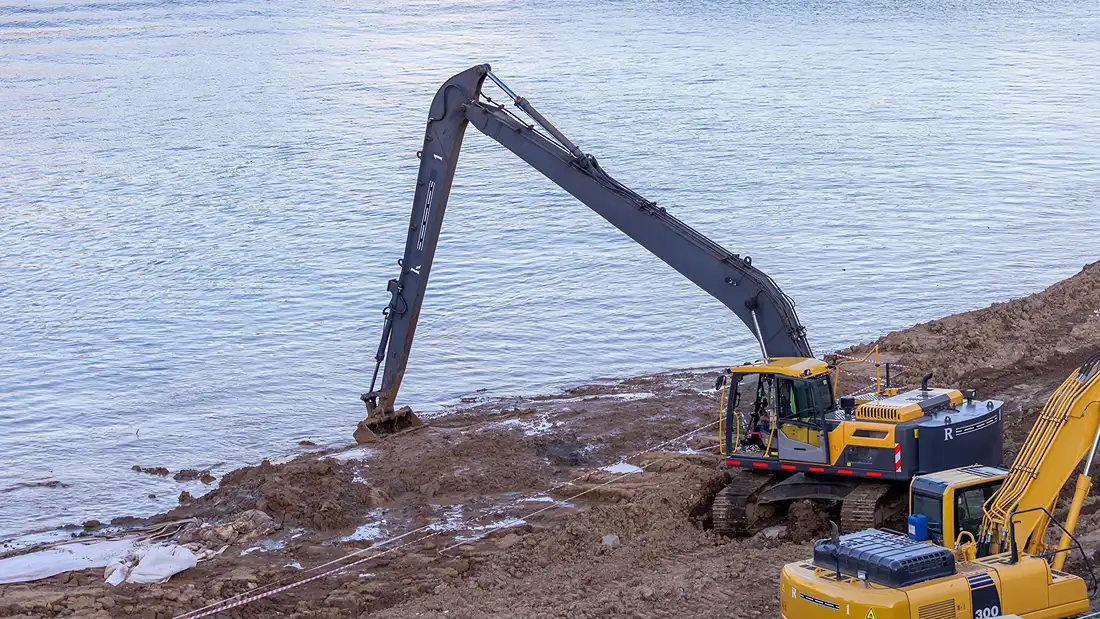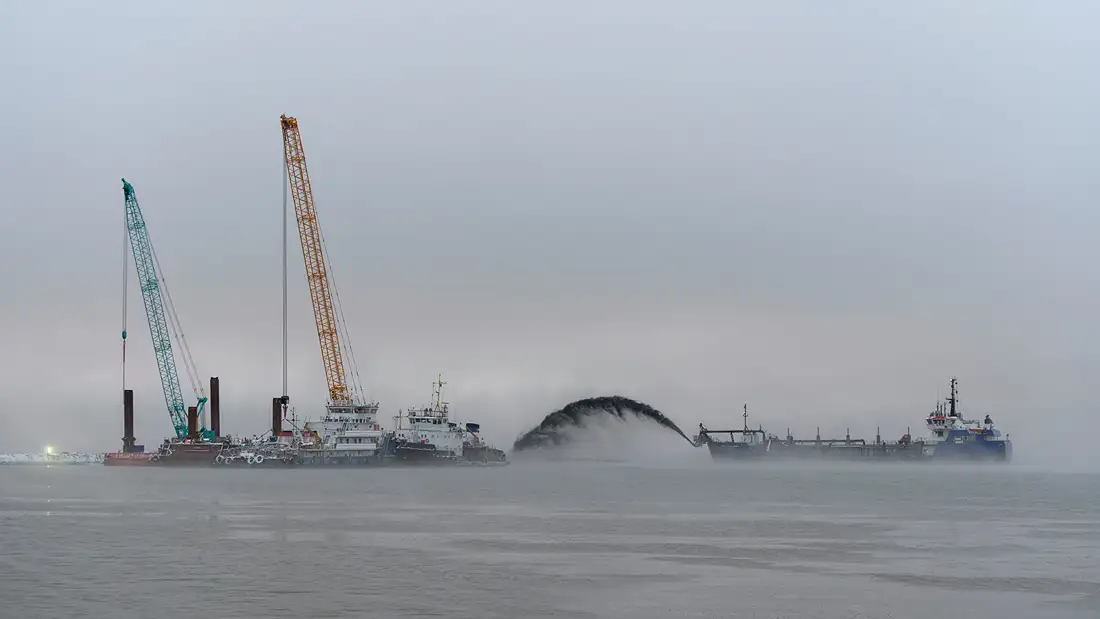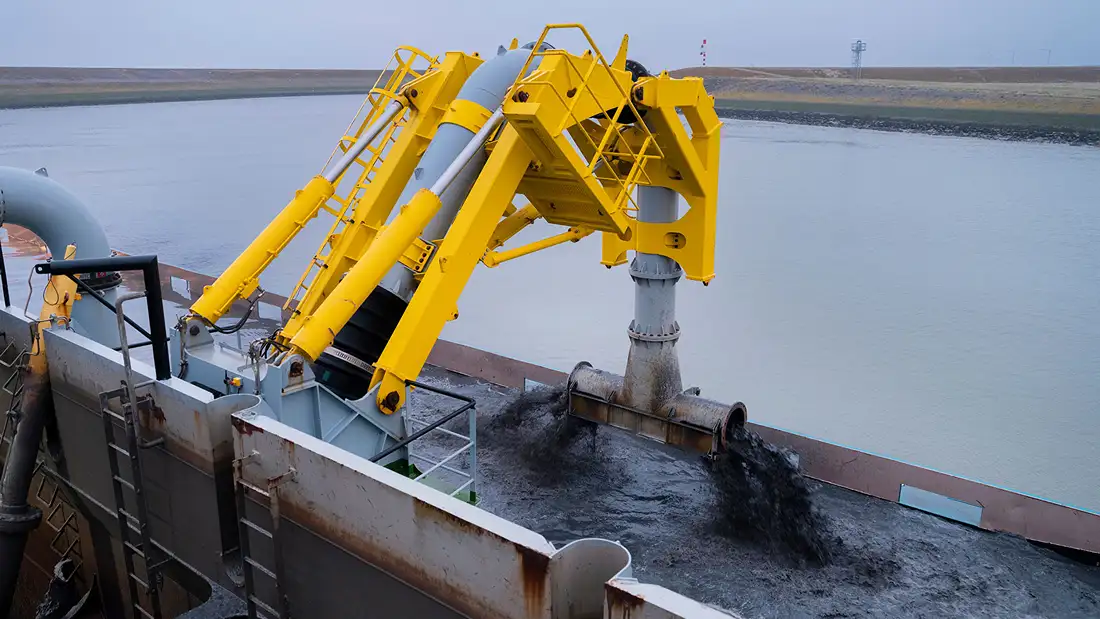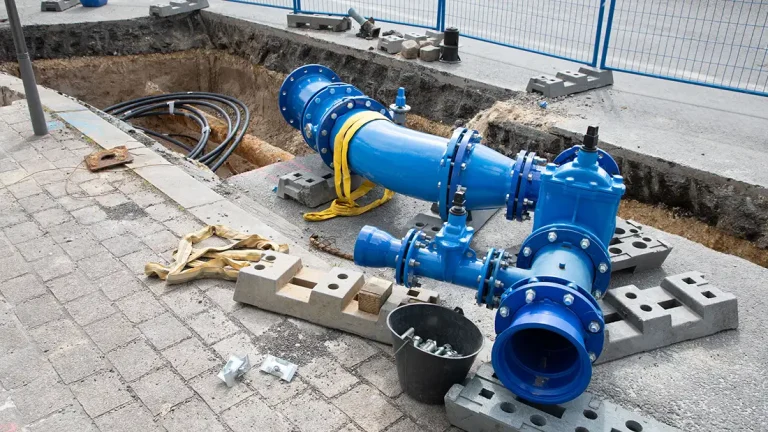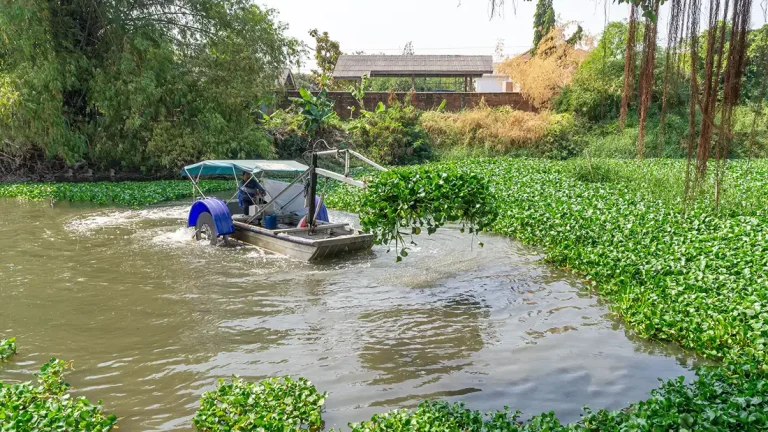Dredging technology plays a substantial role in the development and maintenance of coastal and marine infrastructure, ensuring the safe navigation of vessels, the construction of offshore platforms, and the restoration of vital ecosystems. As global industries expand and environmental challenges intensify, modern dredging technology has become a cornerstone of marine and coastal projects, offering solutions that are not only more efficient but also environmentally sustainable.
From port authorities managing bustling trade routes to oil and gas companies preparing offshore rigs, the application of dredging technology has evolved significantly. Innovations in dredge technology now provide stakeholders across industries, including mining, municipal governments, and military organizations, with powerful tools to tackle complex dredging projects. These advancements enhance the precision, speed, and cost-effectiveness of dredging operations, while also addressing environmental concerns through the use of clean dredging technology.
In this blog, we will explore how cutting-edge dredging techniques are transforming coastal and marine infrastructure projects. By examining the latest innovations, we will highlight their real-world applications, performance benefits, and the return on investment (ROI) they offer to industries involved in large-scale dredging projects.
Understanding Dredging: A Crucial Process for Marine and Coastal Projects
What is Dredging?
Dredging is the process of removing sediments, debris, or contaminants from the bottom of bodies of water to create or maintain navigable waterways, enhance marine infrastructure, and restore coastal ecosystems. This essential activity supports a wide range of coastal and marine projects, from port expansions and the construction of offshore platforms to environmental restoration and flood prevention. At its core, dredging allows for the systematic and controlled removal of materials from the seabed, which is vital to the safety, functionality, and longevity of maritime operations.
Dredging in Coastal Areas
In the context of coastal areas, dredge technology serves as a key tool for tackling issues like sediment buildup in harbors, shoreline erosion, and habitat degradation. It helps ensure that vital maritime routes remain open, while also addressing the growing need for clean dredging technology to reduce environmental impact. The ability to remove not just sediment but also pollutants and contaminants is a game-changer for industries dealing with environmental remediation, such as mining, oil and gas, and municipal infrastructure projects.
Real-World Applications of Dredging Technology
For industries involved in large-scale projects, especially those requiring precise sediment removal or the restoration of degraded environments, modern dredging solutions have proven to be indispensable. Clean dredging technology helps companies minimize their ecological footprint while maximizing efficiency, offering an essential balance between industrial progress and environmental preservation. In this section, we will explore how advancements in dredging technology are facilitating a diverse array of projects and providing significant benefits across sectors.
Dredging Techniques: From Mechanical to Hydraulic and Beyond
Overview of Dredging Methods
Modern dredging technology encompasses a wide range of methods tailored to different project requirements, sediment types, and environmental constraints. Whether applied in deep-water ports, coastal defense projects, or environmental remediation, the selection of the right dredge technology directly influences operational efficiency, cost, and ecological impact. The core dredging methods can be broadly classified into mechanical dredging, hydraulic dredging, and specialized techniques; each plays a critical role in today’s coastal and marine projects.
Mechanical Dredging
Mechanical dredging involves the direct removal of seabed material using physical tools such as clamshell buckets, dipper dredgers, or backhoes mounted on barges. This technology is ideal for projects that require the excavation of compacted or rocky materials, or when working within confined spaces like ports or docks. Its precision and control make it especially valuable in capital and maintenance dredging, where accuracy is essential for protecting nearby infrastructure.
While mechanical methods are effective, they must be managed carefully to minimize turbidity and sediment dispersion, especially in sensitive environmental zones. Advances in mechanical dredge technology now include GPS-guided systems and automated controls that improve productivity while reducing environmental risk.
Hydraulic Dredging
Hydraulic dredging uses powerful pumps to create a slurry of water and sediment, which is then transported through floating pipelines to designated disposal or reclamation sites. This technique is commonly used in large-scale applications such as land reclamation, channel deepening, and coastal nourishment. Cutter suction dredgers (CSDs) and trailing suction hopper dredgers (TSHDs) are two of the most widely used machines in this category.
Hydraulic dredging technology excels in handling soft sediments and covering large areas efficiently. When paired with clean dredging technology solutions, such as turbidity control systems and eco-friendly discharge methods, this approach can meet both operational and environmental performance goals. These innovations are particularly valuable to oil and gas operators, naval contractors, and government-led coastal protection initiatives.
Specialized and Clean Dredging Technologies
Beyond the traditional methods, the industry has seen a growing emphasis on clean dredging technology that minimizes ecological disturbance and enhances sustainability. Techniques such as water injection, dredging, and hydrodynamic ploughing are examples of specialized dredge technology that work with natural currents to redistribute sediment without the need for extraction.
These low-impact methods are increasingly used in environmental dredging and in projects located near sensitive habitats or protected coastlines. They support compliance with environmental regulations while reducing operational costs associated with sediment transport and disposal.
Choosing the Right Dredging Technology
Selecting the right technology depends on various factors: project goals, sediment type, environmental limitations, and cost considerations. As equipment and processes continue to evolve, project stakeholders, from engineering managers to procurement heads, have access to a wider array of solutions that deliver high performance, improved ROI, and reduced environmental impact.
Across industries, the move toward smarter, more sustainable dredge technology is refining and changing the future of marine and coastal construction. By integrating advanced capabilities with site-specific strategies, today’s dredging projects are achieving better outcomes at lower risks.
Classifying Dredging Projects: Maintenance, Capital, and Environmental
Understanding the Types of Dredging Operations
Modern dredging technology is applied across a spectrum of coastal and marine infrastructure projects, each with distinct objectives and technical demands. Classifying these operations helps decision-makers select the right dredge technology, equipment, and strategy based on specific project goals; whether it’s maintaining port depth, expanding navigable waterways, or restoring ecosystems. The three primary categories, maintenance dredging, capital dredging, and environmental dredging, all benefit from advancements in both conventional and clean dredging technology.
Maintenance Dredging
Maintenance dredging is the most routine and widespread form of dredging, essential for ensuring that existing channels, ports, harbors, and marinas remain operational. Over time, natural sedimentation can reduce water depth, making it difficult, or even unsafe, for vessels to navigate. This type of dredging removes accumulated silt, sand, and debris to restore original design depths.
Advanced dredging technology allows more efficient and cost-effective maintenance operations. GPS-guided dredgers, sediment monitoring systems, and real-time data analytics help minimize downtime and optimize precision. For port authorities, naval facilities, and municipalities, adopting modern dredge technology ensures uninterrupted operations and lowers the frequency of future maintenance cycles, contributing directly to reduced operating costs and improved ROI.
Capital Dredging
Capital dredging refers to large-scale excavation works that create new waterways, deepen existing ones, or prepare the seabed for new infrastructure. Common applications include port expansion, the creation of new shipping lanes, land reclamation, and the construction of offshore platforms or bridge foundations.
This type of project often involves complex geotechnical conditions and large volumes of sediment removal, requiring high-powered technology such as cutter suction dredgers (CSDs) and trailing suction hopper dredgers (TSHDs). These machines, equipped with modern automation and monitoring systems, deliver high-volume performance with reduced environmental impact, particularly when integrated with clean dredging technology practices. For industries such as oil and gas, mining, and defense, capital dredging represents a foundational step in long-term infrastructure development, where precision, efficiency, and regulatory compliance are non-negotiable.
Environmental Dredging
Environmental dredging is a specialized subset of dredging focused on the removal of contaminated or hazardous sediments to improve water quality, restore ecological balance, or prepare sites for redevelopment. This is often required near industrial zones, urban waterfronts, or degraded wetlands.
Here, the use of clean dredging technology is essential. Techniques must minimize sediment disturbance, control turbidity, and prevent the spread of contaminants. Precision dredging equipment, paired with geofencing, sediment barriers, and real-time environmental monitoring, allows contractors to meet strict regulatory standards while achieving environmental goals. Increasingly, this form of dredge technology is being adopted by municipal governments and environmental agencies looking to rehabilitate critical water bodies in a sustainable and responsible manner.
Strategic Alignment of Dredging Technology to Project Goals
Each type of dredging, maintenance, capital, and environmental demands a tailored technological approach. By leveraging the latest upgrades in dredging technology and adopting sustainable practices enabled by clean dredging technology, project leaders can reduce risk, control costs, and enhance long-term outcomes. The strategic alignment of dredge technology to project objectives is no longer a best practice; it’s a competitive advantage for industries operating in increasingly complex marine and coastal environments.
Advancements in Dredging Technology
Cleaner and More Efficient Dredging Technologies
The landscape of dredging has evolved significantly over the past few decades, with innovations focused on improving efficiency, reducing environmental impact, and lowering operational costs. One of the most notable developments is the integration of clean dredging technology, which aims to minimize the ecological footprint of dredging operations while maintaining high levels of performance. These advancements are not only transforming how dredging projects are executed but also enhancing their long-term sustainability.
Modern dredging technology incorporates several eco-friendly innovations, including systems designed to reduce water turbidity, control sediment dispersion, and protect marine life. For example, the development of enclosed or semi-enclosed dredging buckets and specialized sediment collection systems prevents sediment from being resuspended into the water column, significantly decreasing the environmental impact of dredging activities. Additionally, advancements in water filtration and turbidity control technologies ensure that sediment handling is as clean and efficient as possible, aligning with the growing emphasis on environmental responsibility in dredging projects.
The rise of automated systems and AI-powered dredgers has also played an important role in increasing efficiency. Dredging operations can be improved for speed, precision, and cost-effectiveness using real-time data analytics, reducing resource waste while delivering accurate dredging outcomes. These advancements are especially useful for large-scale dredging operations like port expansions and land reclamation, which need precision and operational speed.
New Equipment and Tools
Innovations in technology have also resulted in the development of new equipment, which greatly increases the efficiency and precision of dredging operations. Cutter suction dredgers (CSDs) and trailing suction hopper dredgers (TSHDs), for example, have undergone significant upgrades with the latest dredge technology to enhance their capabilities. These sophisticated dredgers are fitted with GPS and real-time monitoring systems, giving contractors exact control over sediment collection and disposal, resulting in increased operating efficiency and cost savings.
One of the most intriguing developments in dredging is the creation of hybrid and electric-powered dredgers. These vessels use renewable energy sources or hybrid powertrains to reduce fuel consumption and pollutants, making them a more environmentally friendly choice for dredging in sensitive locations. As global carbon emissions restrictions tighten, the use of green dredging technologies is likely to increase dramatically, providing an environmentally friendly alternative to traditional fuel-powered dredgers.
Another notable breakthrough in dredge technology is the usage of specialized dredging tools, such as remote-controlled dredging robots and robotic arms, which enable more precise and less invasive silt removal in constrained or hazardous locations. These innovations not only increase the precision of dredging operations but also eliminate the need for human intervention in potentially hazardous situations, hence increasing safety and lowering risk.
Sustainability and Regulation Compliance
As environmental regulations become increasingly stringent, the need for clean dredging technology has never been greater. Governments and regulatory bodies worldwide are placing more emphasis on minimizing the environmental impact of dredging activities. In response, dredging companies have invested in technologies that help them meet compliance standards while maintaining operational efficiency.
Technologies like sediment filtration systems, closed-loop dredging methods, and advanced turbidity control devices allow contractors to ensure that dredging projects are conducted in full compliance with environmental protection laws. Furthermore, real-time environmental monitoring systems integrated into modern dredging technology provide project teams with the data needed to adjust operations on the fly, ensuring that they remain within regulatory limits throughout the dredging process.
The adoption of these sustainable technologies not only helps companies meet regulatory requirements but also enhances their reputation in the marketplace. For procurement heads and project managers in industries such as mining, oil and gas, and municipal construction, investing in clean dredging technology can significantly improve a company’s environmental profile while also delivering long-term economic benefits through reduced operating costs and compliance-related penalties.
The Impact of Technological Advancements on ROI
Advancements in the dredging industry are having a profound impact on the return on investment (ROI) for coastal and marine projects. The integration of clean dredging technology allows for reduced fuel consumption, faster project completion times, and lower maintenance costs. Furthermore, the ability to efficiently manage sediment disposal and minimize environmental damage means fewer fines and regulatory issues, contributing to a more predictable and profitable project outcome.
In industries like oil and gas, mining, and municipal development, where projects often involve significant capital expenditure, the ROI from investing in modern dredging solutions can be substantial. With the right dredge technology, project contractors and government buyers can achieve faster turnarounds, better project outcomes, and enhanced environmental stewardship; all contributing to long-term financial success.
Performance Benefits and Return on Investment (ROI)
Enhancing Operational Efficiency with Modern Dredging Technology
One of the most significant advantages of today’s advanced dredging technology is the dramatic improvement in operational efficiency across a wide range of marine and coastal projects. From capital dredging in deepwater ports to environmental remediation near sensitive habitats, modern dredge technology allows for faster, more precise, and cost-effective sediment removal.
Automated controls, GPS-guided systems, and real-time monitoring tools integrated into the latest dredging technology significantly reduce downtime, optimize fuel consumption, and minimize over-dredging. This results in streamlined operations, predictable scheduling, and better resource allocation; factors that are critical for procurement heads and engineering managers working on tight timelines and budgets.
Hydraulic dredgers, for instance, have evolved to incorporate smart pump systems and energy-efficient propulsion, allowing for longer operating cycles with reduced energy costs. Mechanical dredgers now feature enhanced lifting systems and precision tools that reduce wear and tear, extending equipment life and lowering maintenance costs. These improvements are not only beneficial in terms of daily operations but also directly contribute to measurable cost savings over the lifespan of a project.
Environmental and Compliance Benefits of Clean Dredging Technology
Integrating clean dredging technology into project planning delivers far-reaching environmental and regulatory advantages. Projects that previously faced delays or penalties due to environmental non-compliance can now meet stringent ecological standards without compromising performance. Technologies such as turbidity curtains, low-turbulence dredging heads, and environmentally sealed buckets help reduce sediment resuspension and prevent the spread of contaminants, particularly in sensitive or protected marine zones.
These environmental safeguards are increasingly critical for municipal authorities, military installations, and oil and gas operations that must adhere to local, national, or international regulatory frameworks. By using clean dredging technology, contractors not only meet legal obligations but also reduce reputational risk and improve stakeholder confidence.
Furthermore, sustainability-focused procurement teams now view investment in environmentally responsible dredge technology as a long-term asset. By reducing the environmental footprint of operations, organizations can align with broader ESG (Environmental, Social, and Governance) goals, qualify for green funding opportunities, and improve eligibility for future government contracts.
Maximizing ROI Across Industrial and Government Projects
For capital-intensive sectors such as mining, oil and gas, and maritime infrastructure, return on investment is a driving factor in technology selection. The latest dredging technology offers substantial ROI by reducing labor hours, shortening project timelines, and minimizing unplanned delays due to equipment inefficiencies or environmental non-compliance.
Key areas where dredge technology contributes to ROI include:
- Lower fuel consumption through energy-efficient dredging systems.
- Fewer environmental fines or cleanup costs thanks to clean and contained dredging methods.
- Increased asset longevity due to reduced equipment strain and smarter wear management.
- Improved productivity with higher dredging rates and real-time performance adjustments.
For example, a port authority investing in smart hydraulic dredging systems can expect reduced maintenance dredging frequency due to more accurate sediment control, resulting in long-term operational savings. Similarly, a government-backed coastal restoration project using clean dredging technology may qualify for environmental credits or incentives, further improving financial outcomes.
Strategic Value for Decision-Makers
Ultimately, the strategic adoption of advanced dredging technology delivers more than just immediate cost savings. It strengthens project outcomes, supports regulatory compliance, and demonstrates a commitment to environmental responsibility. For decision-makers, including project contractors, military engineers, municipal buyers, and procurement leaders, the ability to leverage modern dredge technology translates into stronger performance metrics, reduced risk, and a measurable competitive advantage in both public and private sector projects.
As coastal and marine infrastructure continues to expand under increased environmental scrutiny and operational complexity, the performance and financial benefits of modern, clean dredging technology make it an essential component of any forward-thinking dredging strategy.
Future of Dredging Technology: What’s on the Horizon?
Emerging Trends in Dredging Technology
As the world’s demand for sustainable marine infrastructure grows, innovation, automation, and environmental responsibility are influencing the future of dredging technology. Industries that rely on large-scale dredging operations, such as oil and gas, mining, government maritime agencies, and coastal infrastructure contractors, are increasingly adopting intelligent, data-driven solutions to improve project execution while reducing environmental effect.
One of the most transformative trends is the integration of autonomous systems into modern dredge technology. Autonomous dredgers, equipped with AI-based navigation and real-time decision-making capabilities, are now being tested and deployed in both capital and maintenance dredging scenarios. These systems improve safety by reducing human involvement in hazardous environments and optimize performance by adjusting dredging parameters in real time based on sediment type, current flow, and environmental constraints.
The future also points to greater use of digital twins in dredging operations. These virtual models of dredging projects allow for predictive analysis and scenario planning, helping project managers and procurement teams assess the most efficient deployment of resources before mobilizing equipment. Combined with sensor-based monitoring and cloud connectivity, this next generation of dredging technology offers unparalleled precision and control across every phase of a project.
Clean Dredging Technology as a Long-Term Standard
As environmental regulations become more stringent and public expectations around sustainability rise, clean dredging technology is no longer just a competitive advantage; it’s fast becoming a requirement. Future projects will likely mandate the use of low-impact dredging methods that preserve water quality, protect marine habitats, and reduce emissions.
Electric and hybrid-powered dredgers are poised to replace diesel-based systems in many applications, offering a cleaner alternative with lower operating costs over time. Additionally, closed-loop dredging systems, which capture and treat dredged materials onboard, are gaining traction in projects where environmental sensitivity is paramount, such as wetland restoration, contaminated sediment removal, and urban waterfront redevelopment.
For industries working in sensitive zones or near populated coastal areas, the ability to deploy clean dredging technology will directly influence regulatory approvals and project timelines. Forward-looking organizations are already investing in these technologies to future-proof their operations and maintain compliance with evolving marine environmental policies.
Implications for Coastal and Marine Projects
The future of dredging technology promises significant implications for the design, execution, and lifecycle performance of coastal and marine infrastructure projects. Innovations in dredge technology will empower decision-makers to approach dredging as a strategic function, integrating real-time data, advanced equipment, and sustainable practices from the outset.
In the long term, the convergence of automation, environmental technology, and data intelligence will redefine what’s possible in the dredging sector. By adopting advanced dredging technology early, industries and government agencies can position themselves at the forefront of a rapidly modernizing field, benefiting from improved performance, enhanced compliance, and stronger project returns.
Final Insights on Advancements in Dredging Technology
The continuous evolution of dredging technology is reshaping the landscape of coastal and marine infrastructure projects by offering solutions that are both high-performing and environmentally responsible. Modern dredge technology, including clean dredging technology, provides industries, from port authorities and mining to oil and gas and government agencies, with tools that enhance operational efficiency, reduce ecological impact, and improve regulatory compliance. These advancements translate directly into substantial performance benefits and stronger return on investment, making them indispensable for procurement heads, engineering managers, and project contractors aiming to optimize outcomes in complex marine environments.
As regulatory pressures increase and sustainability becomes a major focus, the adoption of advanced dredging solutions has become a strategic necessity. Projects that make smart use of these technologies benefit from faster execution times, lower costs related to environmental mitigation, and improved stakeholder confidence. Ultimately, embracing the latest in dredging technology enables organizations to deliver projects that meet both economic and environmental goals, positioning them for long-term success in a competitive, rapidly evolving industry.
For more information on how advanced dredging technology can enhance your next project, contact us today to discuss tailored solutions that meet your specific needs.

